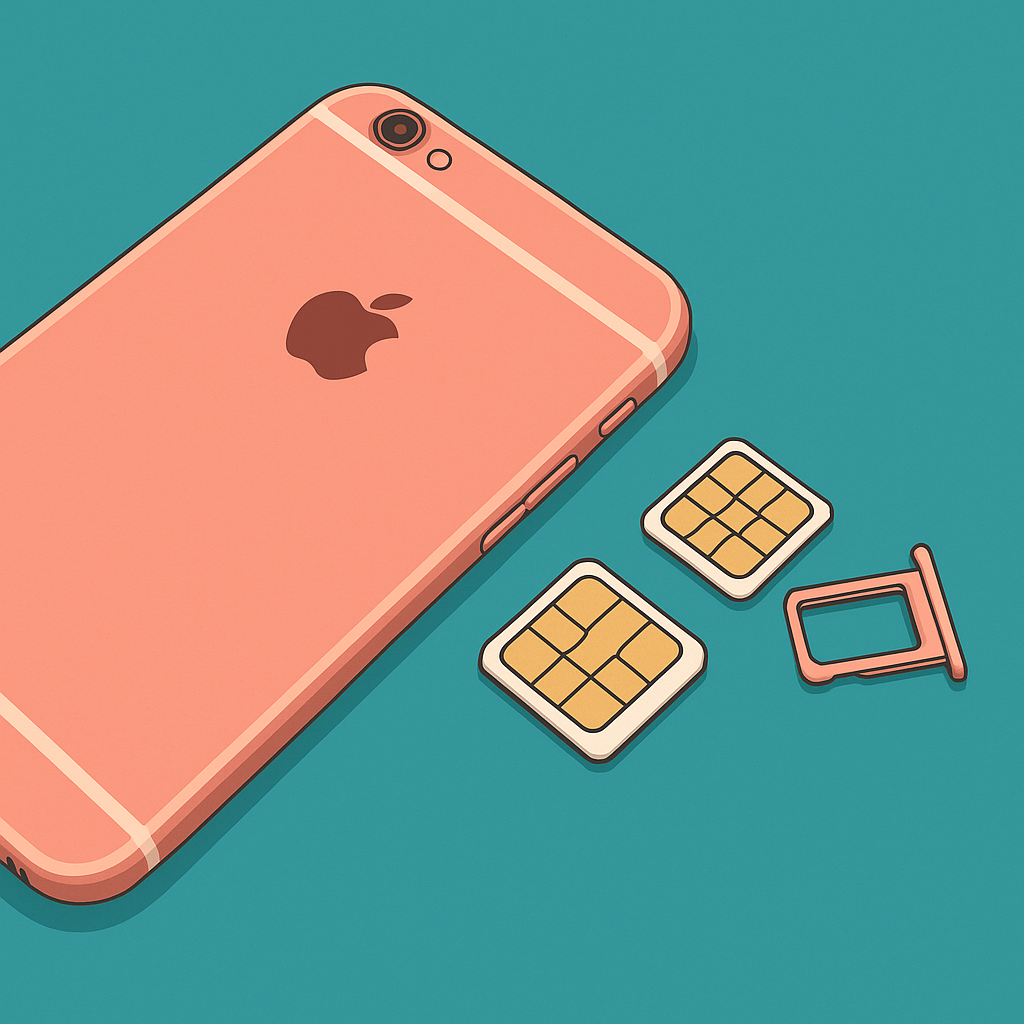There was a time when having a dual SIM phone felt like a life hack.
Two SIM cards, one phone? Genius. But now, with eSIM technology becoming the new normal, you don't need a dual SIM card slot anymore.
Heck, you don't even need a SIM card.
Let’s break it down.
What Is a Dual SIM Phone?
A dual SIM phone used to mean a phone with two physical SIM slots—great for travellers or anyone juggling work and personal numbers. Today, it also includes phones with eSIMs, allowing a mix of physical and digital SIMs for even more flexibility—either physical SIMs, eSIMs, or a combo of both.
This lets you use two phone numbers or mobile plans on the same phone. Handy if you want to keep work and personal calls separate, or if you’re travelling and want a local data plan to avoid data roaming charges.
There are two main types of dual SIM setups:
- Dual SIM, Dual Standby (DSDS): This is the most common type. Both SIMs can receive calls and texts, but only one is active at a time. If you’re on a call on SIM 1, SIM 2 goes quiet until you're done.
- Dual Active SIM: This setup lets both SIMs stay active—even during calls. It’s less common, but useful if you need to stay available on two lines simultaneously.
How Do Dual SIM Phones Work?
In short? A dual SIM phone lets you juggle two mobile plans on one device—no need for a second phone or fiddling with SIM cards using a bent paperclip.
Here’s how it works: your phone connects to two networks and lets you switch between them.
You can:
- Make or receive calls and texts from either number
- Choose which SIM to use for mobile data
- Label SIMs (e.g. "Work" and "Travel") so you don’t mix them up
If you're using Dual SIM, Dual Standby (which most phones do), your phone listens for activity on both SIMs, but only one can be active during a call. With Dual Active SIMs, both lines stay open all the time—but you’ll usually pay more for that feature.
Where You’ll See Dual SIM in Action
Most Android phones—especially from Samsung, Xiaomi, and OnePlus—support dual SIM, either via two physical SIM trays or one tray plus eSIM support. For example, most modern iPhones support one physical SIM and one eSIM, or even two eSIMs.
But wait. What is an eSIM?
Short for “embedded SIM” an eSIM is a digital SIM that's already built into your phone, tablet, or laptop. It's quick to set up, easy to use, and there’s no need for any SIM card tray—just download a plan online, and you'll be connected in minutes.
Not All Phones Are Dual SIM
While most newer smartphones support dual SIM in some form—either physical SIMs, eSIMs, or both—not all devices do. If your phone only has one SIM slot and doesn’t support eSIM, you’re out of luck—so it’s always worth double-checking the specs before making any assumptions.
eSIM—It's Like Having 10 SIM Card Slots!
Here’s the kicker: if your phone supports eSIM, you might already have dual SIM functionality—even if there's only one physical SIM slot.
Forget about card trays that can hold two SIM cards. With eSIM, you can have up to 10 different profiles, and switch between them through your phone settings.
For example:
- iPhones from XS onward support eSIM + physical SIM
- Pixel and Samsung Galaxy devices often do the same
- Newer iPhones can support eSIM only (so no tray required)
That means you can:
- Use a home SIM and a travel eSIM at the same time
- Keep a work number active while switching personal plans
- Avoid swapping SIMs when you land in a new country
You searched for “dual SIM,” but chances are your eSIM-compatible phone can already do it—and more.
You Don’t Need a Traditional Dual SIM Phone Anymore
Unless you have a specific need for two physical SIM cards, most modern phones that support eSIM—already give you a dual SIM setup.
In fact, they often make it easier.
No more swapping cards, no more hunting for trays. Just tap, scan, and go.
How to Add an eSIM to Your Phone
Activating an eSIM is easy. Most providers (like Sim Local) will give you a QR code. Just:
- Go to your phone’s mobile network settings
- Tap "Add eSIM" or "Use QR code"
- Scan the code and follow the prompts
That’s it. Your new number or data plan is now ready to roll—no second SIM slot required.
TL;DR
eSIM is the new dual SIM. Unless your phone is ancient, you probably don’t need that second slot anymore.
 The World's Best Christmas Cities (2025 Edition)
The World's Best Christmas Cities (2025 Edition)

